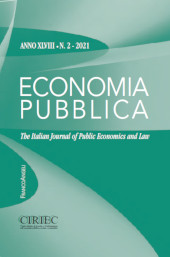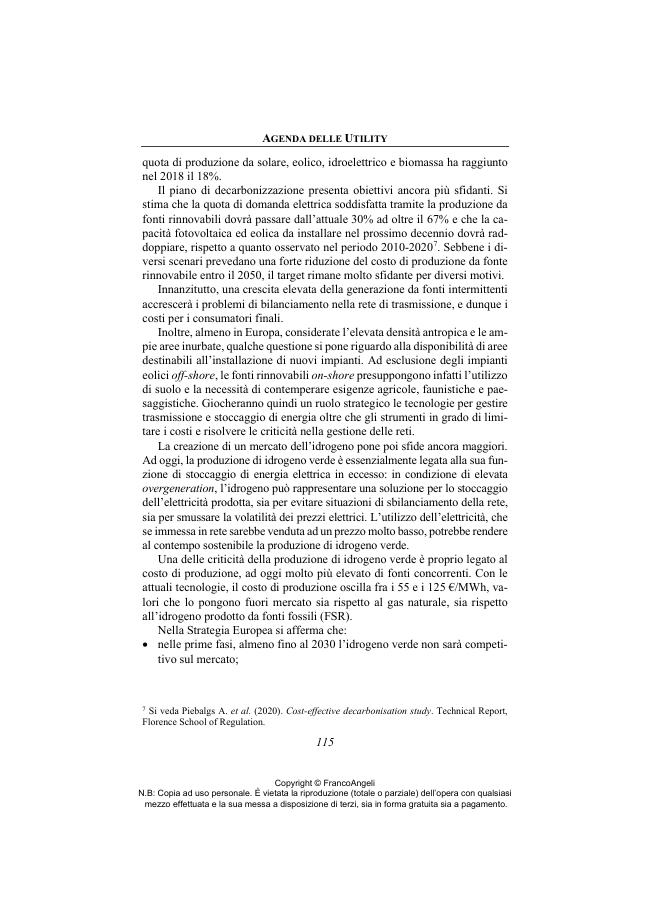La distribuzione di gas naturale nella transizione energetica
105-124 p.
Entro il 2030, il settore dell'energia è chiamato a ridurre le proprie emissioni del 75%, offrendo così il proprio contributo agli sfidanti obiettivi ambientali della transizione energetica. Il metano e le sue infrastrutture si trovano ad affrontare un contesto mutato in modo repentino, ove i rischi di mercato, le opportunità tecnologiche e il quadro legislativoregolatorio sono intrinsecamente legati. Fermo restando che il gas rimarrà rilevante, specialmente in Italia, il processo di assegnazione delle concessioni di distribuzione del gas attraverso gare competitive può diventare un'opportunità per rilanciare gli investimenti e sostenere la strategia di decarbonizzazione italiana.
Fondamentale è l'aggiornamento e l'attuazione del quadro normativo preliminare di incentivazione proposto dall'ARERA, al fine di favorire la convivenza tra i gas tradizionali, oggi indispensabili, e il pieno sviluppo di altre forme di gas ecosostenibili come l'idrogeno che richiedono ancora tempo e ingenti investimenti per raggiungere un adeguato livello di maturità e diffusione [Testo dell'editore].
By 2030, the energy sector will have to reduce its emissions by 75%, thus offering its contribution to the challenging environmental objectives of the energy transition. Methane and its infrastructures are facing an abruptly changed context, where market risks, technological opportunities and the legislativeregulatory framework are intrinsically linked. Notwithstanding the fact that the natural gas will remain relevant, especially in Italy, the process of assignment of gas distribution concessions through competitive tenders can become an opportunity to relaunch investments and support the Italian decarbonisation strategy.
The update and the implementation of the preliminary incentive regulatory framework proposed by ARERA is crucial, in order to foster the coexistence between traditional gases, which are currently essential, and the full development of other forms of environmentally sustainable gas such as hydrogen which still require time and substantial investments to achieve an adequate level of maturity and diffusion. [Publisher's text].
Forma parte de
Economia pubblica : XLVIII, 2, 2021-
Artículos del mismo número (disponibles individualmente)
-
Información
Código DOI: 10.3280/EP2021-002005
ISSN: 1972-5566
MATERIAS
KEYWORDS
- energia, investimenti, regolazione, gas.
- energy, investments, regulation, gas.



